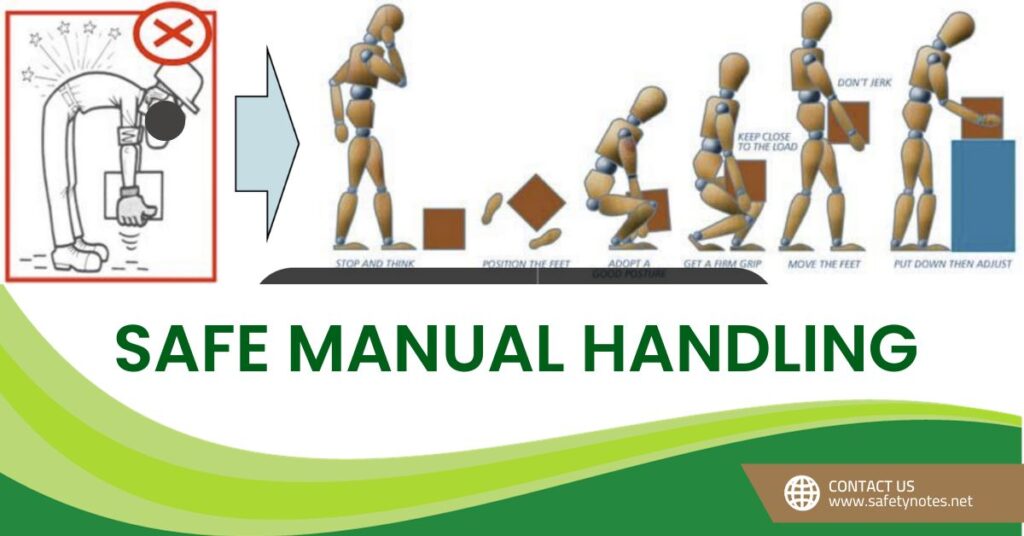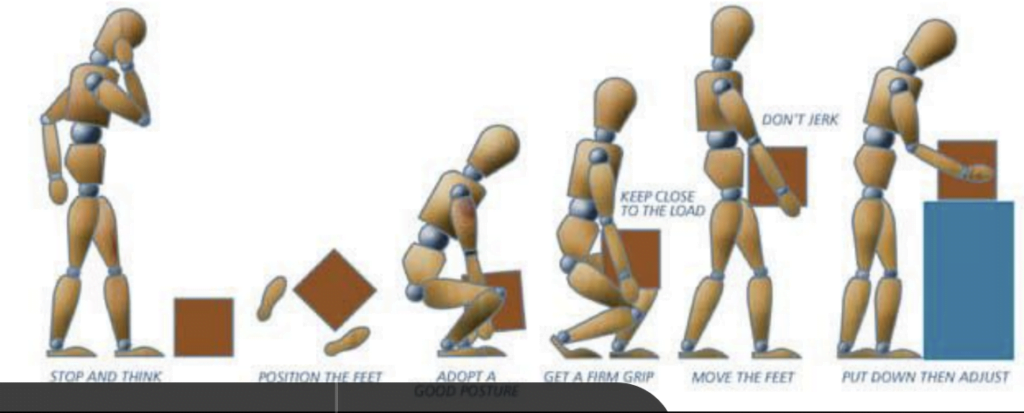
Introduction
Manual handling injuries account for a significant proportion of all injuries that occur within construction sites. What’s more, in most cases, they are preventable. Understanding this fact is the first step towards creating a safer working environment.
What is Manual Handling?
Manual handling is not simply the act of lifting items. It is any activity requiring the use of force exerted by a person to lift, lower, push, pull, carry or otherwise move any object. This broad definition means that we are all involved in manual handling to some extent in our daily work.
The Risks of Manual Handling
Injury from manual handling can be sudden, such as a strain or sprain, or cumulative, resulting from repeated exposure to heavy loads or awkward postures. Common injuries include back pain, hernias, and injuries to the shoulders and arms.
Principles of Safe Manual Handling

STANCE
Stand with the feet apart, and with one foot alongside the load in advance of the other. This stance enables you to keep your balance while handling the load.
STRAIGHT BACK
Maintain a straight back at all times and let the leg muscles do the work. This technique helps to prevent back strain and injury.
CHIN-IN
Before lifting, raise the top of the head slightly and tuck the chin in. This posture helps you to maintain a straight back during the lift.
CORRECT GRIP
Take a proper hold. Grip with the palms and the roots of the fingers. This grip provides the most strength and reduces the risk of dropping the load.
ARMS CLOSE TO BODY
Keep arms close to the body. The body then takes the weight instead of the finger, wrist, arm, and shoulder muscles. This technique prevents strain on these smaller, weaker muscles.
FEET POSITIONS
Your leading foot should always point in the direction you mean to travel. This positioning helps to maintain balance and prevent falls.
BODY WEIGHT
Use your body weight to save muscular effort. By leaning into the load or using your body’s momentum, you can reduce the amount of force needed to move the load.
Handling and Lifting Principles
- Maintain a natural posture whenever possible during manual handling, keeping your ‘spine in line’.
- Always create a good, stable base, by widening your stance within comfortable limits; placing one foot in front of the other, about shoulder width apart. With your knees slightly bent.
- Keep any load, or point of force, as close to your vertical Centre of gravity as possible.
- Use the large leg and buttock muscles to provide the power during manual handling techniques. These muscles are more capable of handling heavy loads without injury.
Conclusion
Manual handling is a common part of many jobs. However, it also carries risks. By understanding these risks and applying the principles of safe manual handling, we can reduce the likelihood of injury and create a safer working environment for everyone. Remember, safety first!


